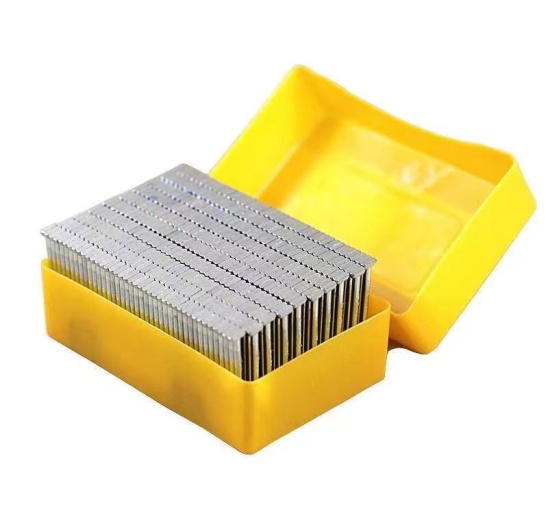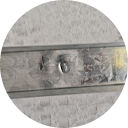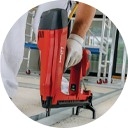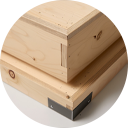How to Select ST Nails for Interior Renovation and Furniture Manufacturing
In the fast-paced world of interior renovation and furniture production, picking the right fasteners can make or break your project. ST nails stand out for their strength and efficiency in tasks like securing wooden studs or assembling cabinet frames. But with so many options, how do you choose wisely? This guide breaks down the selection process for ST nails in key scenarios: fixing wooden studs in renovations, joining decorative panels, building cabinet bodies, and attaching back panels. We’ll focus on three main factors—substrate properties, fastening needs, and tool compatibility—while balancing speed, hold strength, and material protection. Whether you’re a contractor updating a home office or a workshop churning out kitchen cabinets, these tips help you avoid common pitfalls and get reliable results. Drawing from industry standards, the company Qinjia can cover basics, scenario-specific picks, and pro tips to keep your work smooth and sturdy.

What Are the Basic Requirements for Using ST Nails Effectively?
Before diving into specific jobs, you need to nail down the fundamentals. ST nails are glued into straight strips at a 0-degree angle, designed specifically for pneumatic strip nailers. Skipping these basics can lead to jams, breaks, or weak holds that slow you down or compromise safety.
Tool Compatibility for 13GA ST Nails
ST nails come in 13GA with a 2.2mm diameter, so match your pneumatic strip nailer to this spec. Check the tool’s magazine slot—if it’s not built for 13GA, you’ll face feeding issues or mismatches. This setup ensures smooth operation, firing nails quickly without constant adjustments.
Essential Surface Treatments for Indoor Durability
Opt for electro-galvanized or anti-rust coated ST nails to fend off moisture from wood or humidity in storage. Even indoors, wooden studs or cabinets can trap dampness over time. Match colors too—white for light panels, yellow for dark woods—to blend seamlessly and avoid visual eyesores.
Standard Performance Checks to Prevent Failures
Test for consistent glue strength and straight alignment in the strip. Poor quality here leads to misfires. Always inspect a sample pack: if nails bend during a trial drive, swap to a higher-grade batch right away.
How Do You Choose ST Nails for Wooden Stud Fixing in Renovations?
Wooden studs in interior work, often 30x40mm or 40x50mm pine or solid wood, demand nails that punch through the stud and grip into the base layer like gypsum board. The goal? Strong penetration and pull-out resistance to keep ceilings or walls from sagging.
Material Selection: Why 55# Steel Beats 45# for Load-Bearing
Go with 55#/S55C/1055C carbon steel—its higher carbon content delivers better tensile strength than 45# steel. This prevents bending or snapping under weight, ideal for load-bearing spots like suspended ceilings or partitions where studs take daily stress.
Length Guidelines Based on Thickness
Follow this rule: nail length equals stud thickness plus base embedment plus 5-10mm extra. For a 30mm stud into 12mm wood base, pick 45-50mm 13GA ST nails. A 40mm stud needs 60-65mm to ensure deep hold without over-penetration.
Shank and Tip Choices to Protect Softwoods
Smooth shank works best for pine’s softness—low friction means easy driving with minimal splitting risk. Skip ring or screw shanks here; they can twist and crack the grain. Pair with a diamond tip for clean entry, reducing fiber damage on the first hit.

What Makes ST Nails Ideal for Joining Decorative Panels in Renovations?
Decorative panels, from 3mm veneers to 18mm particleboard, call for discreet fastening that hides flaws and prevents warping at seams. You want nails that secure without punching through, keeping that flawless finish intact.
Steel Grades Suited for Low-Stress Panel Work
45#/S45C/1045 steel offers enough toughness without excess hardness that could shatter thin veneers. Its balanced properties handle light shear forces from panel edges, perfect for non-structural joins where overkill isn’t needed.
Precise Length Control to Avoid Surface Damage
Keep lengths to panel thickness plus half the base (like stud or subfloor), never exceeding that by more than 5mm. A 9mm panel on 30mm stud? 15-18mm nails. For 3mm veneer on 18mm base, 10-12mm suffices—short enough to stay hidden, long enough for grip.
Tip Design for Minimal Wood Tear-Out
Diamond tips are non-negotiable—they slice precisely, cutting tear risks on delicate surfaces. This keeps edges crisp, especially on veneers where a rough entry could ruin hours of staining or painting work. Test on scraps to confirm.
How Should You Pick ST Nails for Cabinet Body Assembly in Furniture Making?
Cabinet frames from 18-25mm particleboard or plywood endure constant pulls from doors and shelves, so nails must lock in tight without chipping brittle edges. Focus on enduring hold that stands up to years of use.
High-Carbon Steel for Long-Term Frame Stability
Stick to 55# steel for its superior hardness—it resists deformation from repeated door swings or loaded shelves. Unlike softer grades, it maintains bite in medium-density boards, preventing loose joints over time.
Scaling Length to Board Thickness for Deep Embedment
Use 1.5 times the board thickness: 27-30mm for 18mm panels, 35-40mm for 25mm. This drives through the first layer and embeds halfway into the second, boosting overall rigidity without poking out the back.
Pre-Drilling Tips for Brittle Materials
For particleboard’s fragility, pre-drill holes slightly narrower than the shank—avoids edge blowouts on direct drives. Solid woods? Straight smooth shank nails slide in fine, with low resistance keeping assembly speedy.
What ST Nail Specs Work Best for Securing Cabinet Back Panels?
Back panels, thin 3-5mm fiberboard or plywood, prioritize quick clips over heavy duty—light weight means low stress, but nails can’t pierce through or bulge the surface.
Cost-Effective 45# Steel for Light-Duty Holds
45# steel fits perfectly here—ample for minimal loads, and cheaper than pricier grades. It provides just-right flexibility to flex with the panel without snapping under slight movements.
Ultra-Short Lengths to Prevent Breakthroughs
Limit to 5-8mm: 5-6mm for 3mm panels into 18mm sides, 7-8mm for 5mm. This embeds 2-3mm into the frame, securing without risking side or back punctures that could snag clothes or warp the fit.
Smooth Shank Variations for Delicate Surfaces
Fine-tooth or standard smooth shanks minimize pressure on thin boards, curbing bubbles or dents. Short nails plus slick surfaces let you zip through installs, ideal for high-volume shops.
What Common Mistakes to Avoid When Selecting ST Nails?
Even pros slip up on ST nail choices—here’s how to sidestep those traps that waste time and materials, ensuring your projects stay on budget and schedule.
Dangers of One-Size-Fits-All Approaches
Short nails flop on studs (weak holds lead to shifts), while longs ruin backs (pierces cause defects). Tailor specs per job—don’t bulk-buy one length; it invites callbacks and rework.
Packaging Choices for Job Scale and Storage
Boxes hold 400 nails, 20 per carton—grab singles for small renos like a single ceiling patch to dodge rust from extras. Factories? Full cartons slash per-nail costs, but store dry to keep coatings intact.
Pre-Use Testing for Tool and Material Fit
Load 10-20 nails into your gun and trial on scrap. Jams? Recheck 13GA magazine match. Bends? Upgrade steel grade, like from 45# to 55# for thick studs. This quick check saves hours mid-job.
FAQ
Q1: Can ST nails work with non-pneumatic tools?
A: No, their glued 0-degree strips are built for pneumatic strip nailers only—hand tools won’t feed them right and risk breaks.
Q2: How do electro-galvanized finishes help in indoor use?
A: They block moisture from wood, extending life even in dry spaces; plus, color options hide them on panels for a clean look.
Q3: What’s the pull-out risk if lengths are too short on studs?
A: High—studs can wobble under weight, causing sags in ceilings; always add that 5-10mm buffer for secure embeds.
















